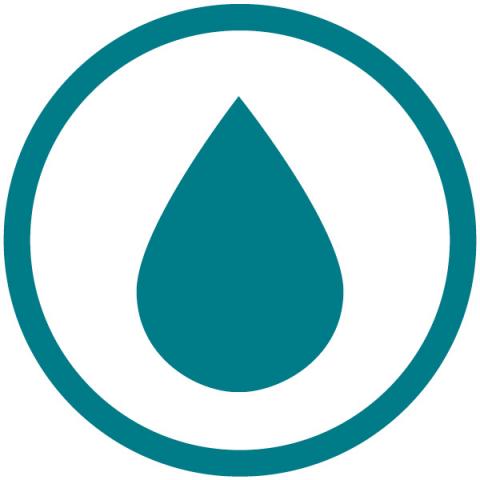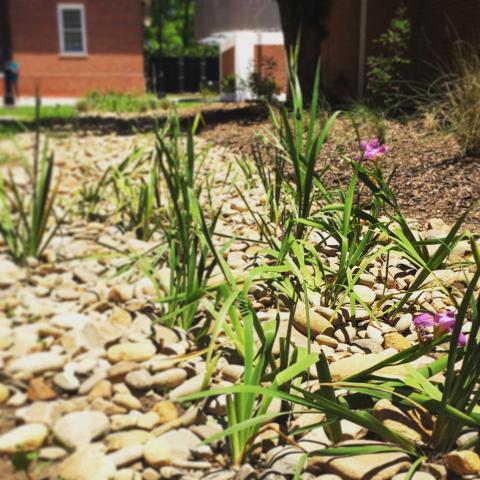Water Use and Watershed
 Objective 1: Reduce potable water usage on campus.
Objective 1: Reduce potable water usage on campus.
Objective 2: Improve local Teche-Vermilion watershed by reducing stormwater runoff and potential sources of non-point pollution. Manage stormwater runoff according to MS4 standards and Best Management Practices.
Stormwater Mitigation
 Lafayette, the 5th rainiest city in the United States, receives on average 61 inches of rain a year! It becomes very important to control the large amount of stormwater runoff, or rain water that flows over paved surfaces (e.g. sidewalks, rooftops, driveways, roads, etc.) because this water collects pollutants. The landscape becomes an important tool to help mitigate stormwater runoff, and UL Lafayette has taken the initiative to implement low impact design principles within the campus landscape. Low impact design technologies include, among others, low-tech vegetated areas such as bioswales and rain gardens.
Lafayette, the 5th rainiest city in the United States, receives on average 61 inches of rain a year! It becomes very important to control the large amount of stormwater runoff, or rain water that flows over paved surfaces (e.g. sidewalks, rooftops, driveways, roads, etc.) because this water collects pollutants. The landscape becomes an important tool to help mitigate stormwater runoff, and UL Lafayette has taken the initiative to implement low impact design principles within the campus landscape. Low impact design technologies include, among others, low-tech vegetated areas such as bioswales and rain gardens.
In a collaborative effort between the Office of Sustainability and Office of Facilities Management, we have built our first bioswale here on campus outside of Wharton Hall in 2016 and since then we have created numerous raingardens and bioswales on campus that slow down, filter, and direct stormwater to nearby drains. These projects, part of our Living Lab, show how stormwater runoff can be managed sustainably. These stormwater mitigation landscaping projects are among our campus's Green Infrastructure. To learn more about our Green Instrastructure projects on campus please visit our Green Infrastructure webpage. In addition, to managing water all rain gardens and bioswales are planted with native plantings to act as habitats for pollinators!
Storm Water Management Plan (SWMP) and Municipal Separate Storm Sewer System (MS4)
On April 30, 2003, the University of Louisiana at Lafayette (“UL Lafayette”) was declared a co-permittee to discharge storm water under a general permit issued to the Lafayette Consolidated Government (“LCG”) by Louisiana Department of Environmental Quality (“DEQ”).
As of 2022, the Office of Sustainability manages the SWMP and MS4 Permit for the University of Louisiana at Lafayette. A SWMP is a plan that addresses the long-term effect of development on storm water quantity or quality and satisfies the requirement for post- construction water quality maintenance in an EPA or LDEQ storm water discharge general permit. A MS4 refers to a convenance or system of conveyances (including roads with drainage systems, municipal streets, catch basins, curbs, gutters, ditches, man-made channels, or storm drains :under section 208 of the Clean Water Act, that discharges into waters of the United States.
If you see any issues pertaining to stormdrains or coulees that run through the UL Lafayette campus or if you see signs of illegal dumping or other possible violations please contact Blair Begnaud.
To view and learn more about the University's Storm Water Management Plan (SWMP) and Municipal Separate Storm Sewer System (MS4) please visit the Storm Water Management Plan(SWMP) and MS4 webpage.
